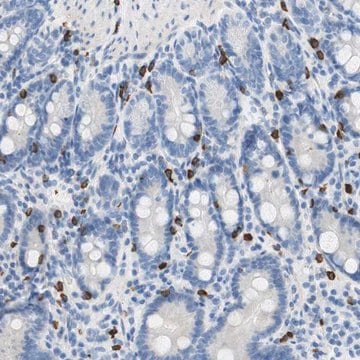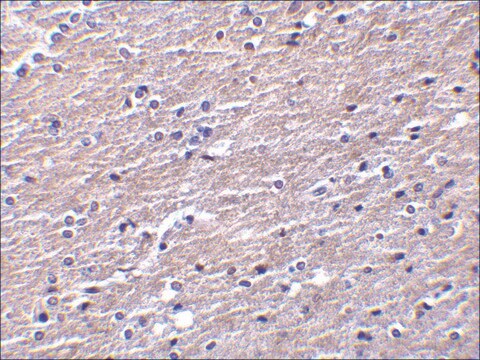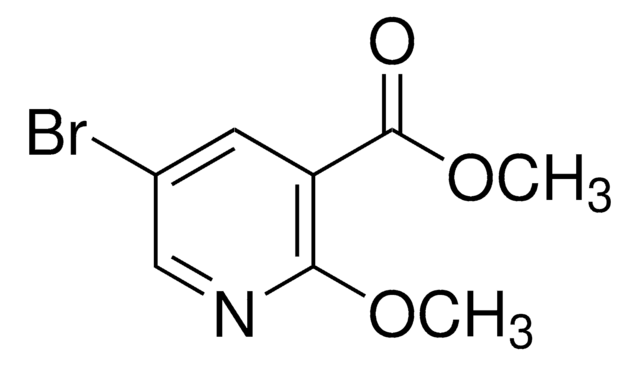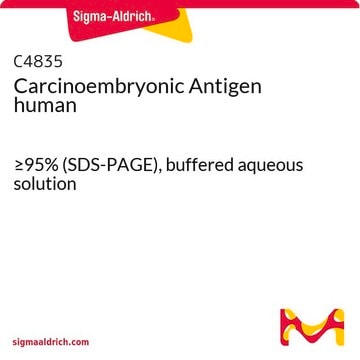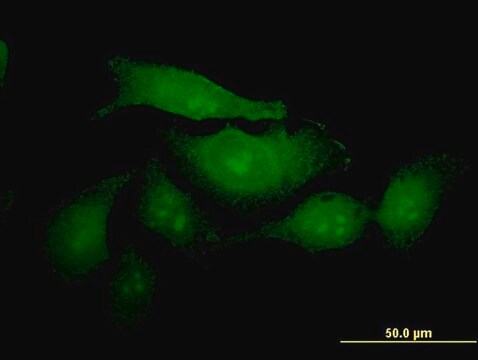MABT65
Anti-CEACAM1 Antibody, clone 4D1/C2
clone 4D1/C2, from mouse
Synonym(s):
Carcinoembryonic antigen-related cell adhesion molecule 1, Biliary glycoprotein 1, BGP-1, CD66a
About This Item
Recommended Products
biological source
mouse
Quality Level
antibody form
purified antibody
antibody product type
primary antibodies
clone
4D1/C2, monoclonal
species reactivity
human
technique(s)
ELISA: suitable
flow cytometry: suitable
immunohistochemistry: suitable
western blot: suitable
isotype
IgG1κ
NCBI accession no.
UniProt accession no.
shipped in
wet ice
target post-translational modification
unmodified
Gene Information
human ... CEACAM1(634)
Related Categories
General description
Immunogen
Application
Western Blot Analysis: A representative lot was used by an independent laboratory to detect CEACAM1 in human granulocyte lysate (Bogoevska, V. et al., (2006). Glycobiology. 16(3): 197–209).
Flow Cytometry Analysis: A representative lot was used by an independent laboratory to detect CEACAM1 in human granulocytes by FACS analysis (Bogoevska, V. et al., (2006). Glycobiology. 16(3): 197–209).
Cell Structure
Adhesion (CAMs)
Quality
Western Blot Analysis: 0.5 µg/mL of this antibody detected CEACAM1 in 10 µg of HepG2 cell lysate.
Target description
Bands are usually observed at ~120-160 kDa, resulting from different glycosylations (Lauke, H., et al. (2004). Mol. Hum. Reprod. 10(4):247-252).
Physical form
Storage and Stability
Analysis Note
HepG2 cell lysate
Other Notes
Disclaimer
Not finding the right product?
Try our Product Selector Tool.
Storage Class Code
12 - Non Combustible Liquids
WGK
WGK 1
Flash Point(F)
Not applicable
Flash Point(C)
Not applicable
Certificates of Analysis (COA)
Search for Certificates of Analysis (COA) by entering the products Lot/Batch Number. Lot and Batch Numbers can be found on a product’s label following the words ‘Lot’ or ‘Batch’.
Already Own This Product?
Find documentation for the products that you have recently purchased in the Document Library.
Our team of scientists has experience in all areas of research including Life Science, Material Science, Chemical Synthesis, Chromatography, Analytical and many others.
Contact Technical Service